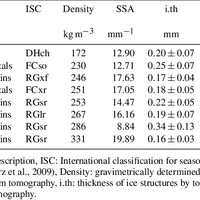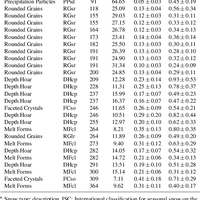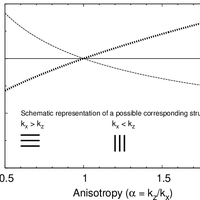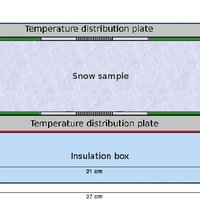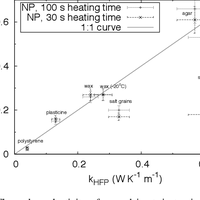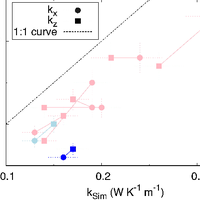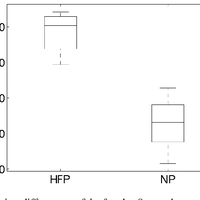Abstract
The thermal conductivity of snow determines the temperature gradient, and by this, it has a direct effect on the rate of snow metamorphism. It is therefore a key property of snow. However, thermal conductivities measured with the transient needle probe and the steady-state, heat flux plate differ. In addition, the anisotropy of thermal conductivity plays an important role in the accuracy of thermal conductivity measurements. In this study, we investigated three independent methods to measure snow thermal conductivity and its anisotropy: a needle probe with a long heating time, a guarded heat flux plate, and direct numerical simulation at the microstructural level of the pore and ice structure. The three methods were applied to identical snow samples. We analyzed the consistency and the difference between these methods. As already shown in former studies, we observed a distinct difference between the anisotropy of thermal conductivity in small rounded grains and in depth hoar. Indeed, the anisotropy between vertical and horizontal thermal conductivity components ranges between 0.5-2. This can cause a difference in thermal conductivity measurements carried out with needle probes of up to -25 % to +25 % if the thermal conductivity is calculated only from a horizontally inserted needle probe. Based on our measurements and the comparison of the three methods studied here, the direct numerical simulation is the most reliable method, as the tensorial components of the thermal conductivity can be calculated and the corresponding microstructure is precisely known. © Author(s) 2013. CC Attribution 3.0 License.
Figures
Register to see more suggestions
Mendeley helps you to discover research relevant for your work.
Cite
CITATION STYLE
Riche, F., & Schneebeli, M. (2013). Thermal conductivity of snow measured by three independent methods and anisotropy considerations. Cryosphere, 7(1), 217–227. https://doi.org/10.5194/tc-7-217-2013

